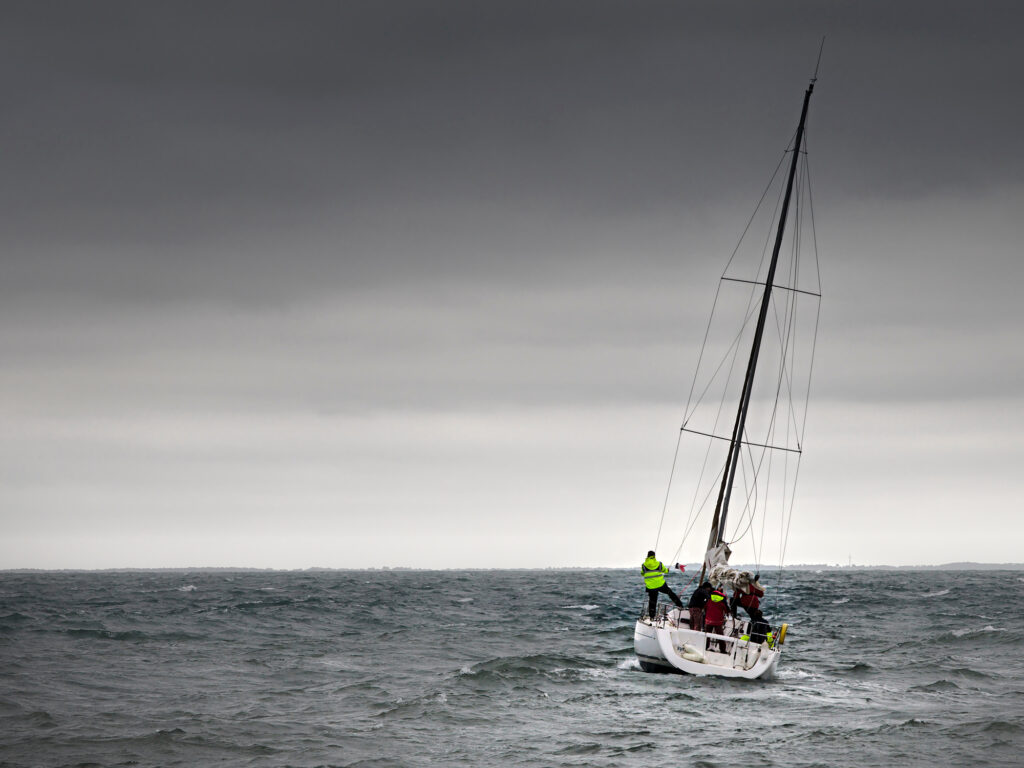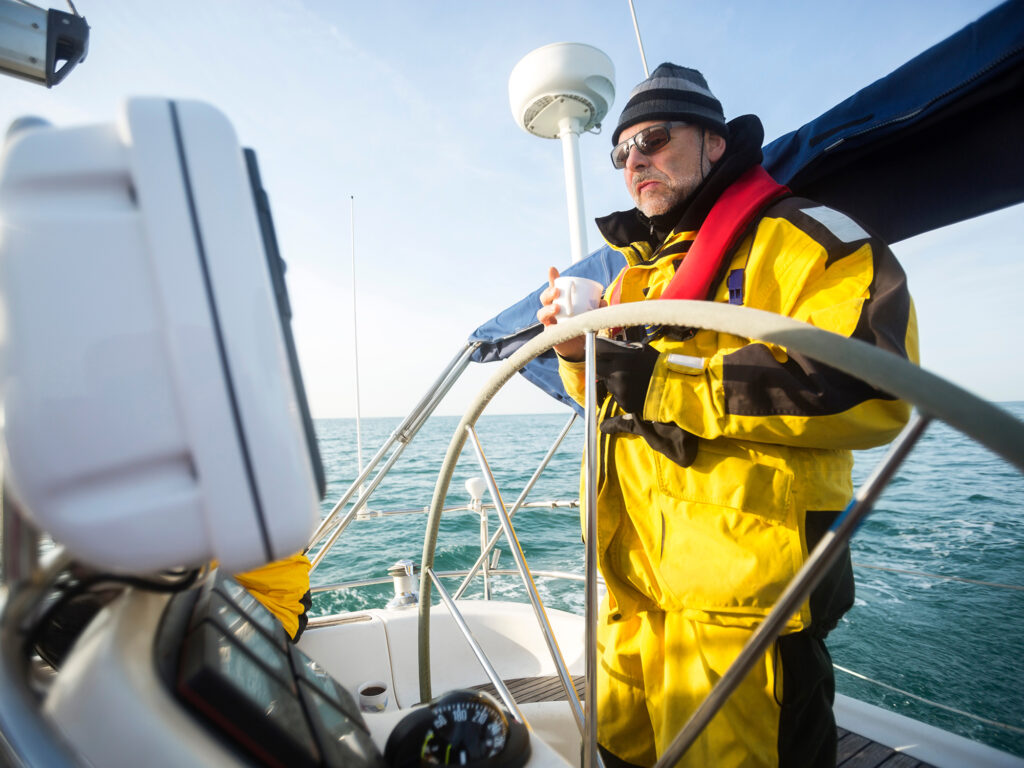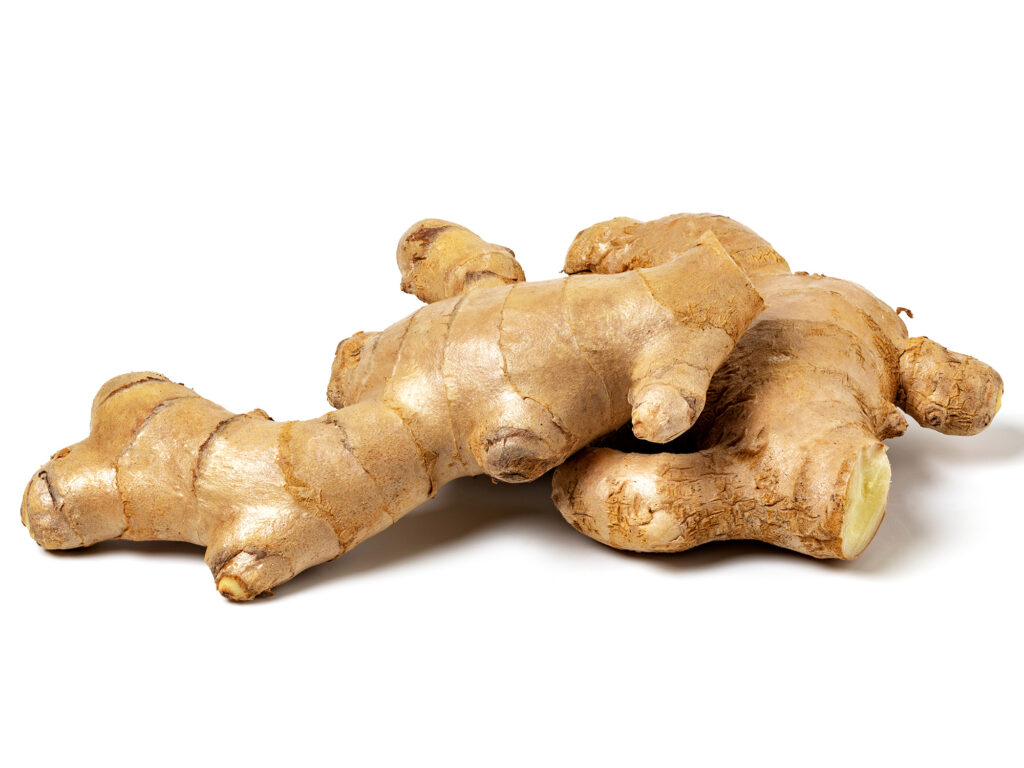
I never thought it would happen to me. I’m known for my iron-clad stomach. I’m the one who can whip up hot meals in the galley while underway; the one who reads on long, windy drives and never turns down a roller-coaster ride. That was until one passage when the motion of the ocean was just wrong enough to send me on a downward spiral of misery.
The route took us from Port Angeles, Washington, to San Francisco—a nonstop offshore passage through a notoriously rough stretch of ocean. I was crew aboard the Challenger 72 SeaDragon, a retired Global Challenge racing yacht designed for sailing “the wrong way” around the world. She was built for charging against prevailing winds and currents, and, as misfortune would have it, we did just that. An unusual southerly wind greeted us head-on for the first few days out of Port Angeles. Prevailing winds on the West Coast generally flow steadily from the northwest and follow the coastline. The winds had kicked up some nasty sea chop as it blew opposite the prevailing swell, like petting a cat’s back hair backward.
As someone not usually prone to motion sickness and having completed several offshore passages comfortably, I didn’t take any preventative medications. I figured I could handle it, just as I had countless times before. Alas, after 12 hours of bashing to weather, things started going downhill for me, and rapidly. Our captain quickly fed me a tablet of Sturgeron, which stayed down just long enough to work its magic. Between sips of water and slowly nibbling on a single ginger candy for hours, I began to feel human again.
My education and work background are in nutrition and its effects (good or bad) on the human body and mind. In hindsight of this passage, I identified a series of behaviors leading up to the trip that left me vulnerable.
I believe my first major mistake was not staying well hydrated before and during the passage. While dehydration is a common side effect of seasickness, being dehydrated to begin with can make you more prone to getting seasick. It’s a vicious cycle, and keeping water and other fluids down is crucial for breaking that cycle. I was also under a lot of stress leading up to the trip, since I was one of the organizers and was heavily involved in provisioning and meal-planning for fourteen crew members. Between stress, travel and a raucous wedding I attended just a few days prior, I wasn’t taking the best care of myself at the time.
What is it about seasickness? Why are some more prone than others, and is there anything we do to make ourselves more resilient mariners? I decided to dive into the research and use my knowledge as a nutritionist to help myself and others avoid such misery.
As the saying goes, “the best form of medicine is prevention.” I believe this approach also applies to seasickness. The dreaded mal de mer can strike down even the most seasoned sailors. Still, there are simple precautions you can take to become more resilient and better prepared for your next passage. We’ll also explore some easy, natural remedies for the seasick crew. But first, let’s dive into the physiology of why we get seasick.
Seasickness is partially due to conflicting sensory input from the inner ear (your balance center) and visual perception. Simply put, your eyes and your feeling of balance are not in agreement, and that can be very disorienting. The chain reaction of seasickness involves high levels of cortisol (the stress hormone) and histamine dumped into the bloodstream. Histamine is a naturally occurring enzyme in the body. Its beneficial functions include digestive stimulation, blood vessel dilation and memory development. In the right amount, histamine does many helpful things in the body. When we experience an allergic reaction, the body releases very high amounts of histamine in response, leading to symptoms like itchy skin or anaphylaxis (throat swelling and breathing difficulties) in severe cases. Histamine is also released in emotionally stressful situations, like preparing for a passage or when the weather and sea state become uncomfortable, even dangerous. Various studies have shown there are foods you can eat (or avoid) and behaviors you can practice to reduce histamine levels and stress, thus reducing the risk of feeling seasick.
Stay Hydrated
Hydration status directly affects histamine concentration in the bloodstream. Being dehydrated can cause many uncomfortable symptoms, from fatigue to digestive ailments. Amanda Swan of The Essential Galley Companion has been leading sailing expeditions and training for over thirty years. When asked, “how can one prepare for a sailing expedition?” her first recommendation is to take an offshore sailing course, and number two is “learn to stay hydrated, as hydration is a key to minimizing seasickness and fatigue.”
Be vigilant about water intake in the days leading up to a passage. Carry a reusable water bottle with you, or set reminders on your phone throughout the day to hydrate. While sailing, keep your water bottle with you while on watch and consider making a thermos of warm herbal tea. If you keep an hourly log while underway, use that action as a reminder to hydrate (check the bilge for water, check yourself for water). Add a squeeze of fresh lemon to add flavor if you prefer something with more flavor, and remember that sparkling water is just as good as still for hydration. Try to avoid flavored sports drinks, which generally have a lot of sugar and artificial coloring, and opt for coconut water to get your electrolytes. (Bonus points if you harvest your own coconuts!) A simple recipe for an electrolyte drink is 16 ounces pure water, 1/4 teaspoon of natural sea salt, juice from half a lemon, and one teaspoon of honey.
Avoid Fried or Heavy Foods and Foods High in Histamine
Heavy or fried foods are more difficult for the body to digest. These foods move slower through the digestive tract and require more energy and fluid to break down (circling back to proper hydration). In many cases, fried foods can cause a range of digestive upsets—not what you want to deal with while on a boat. Avoid excess meat (especially cured meats, like salami or bacon, which are exceptionally high in histamine), cheese and heavy cream-based sauces. You don’t necessarily need to go full-on vegetarian before or during a passage, but I recommend increasing your intake of fresh vegetables and fruit for fiber and various nutrients. You may also experience more energy, sharper thinking, better digestion and more regular bowel movements (if you’ve spent much time on long passages, you know this last point is critical.)

Reduce Alcohol and Coffee
Avoid excess alcohol or coffee in the days leading up to and during your passage. Yes, both are liquids, but caffeine and alcohol are diuretics that can contribute to dehydration. If you have coffee in the morning, have a large glass of water first. Consider a lower-caffeine option like black or green tea, or a mix of decaf and regular coffee for your brew. Balance out each drink of alcohol with a glass of pure water. Alcohol, especially red wine, is very high in histamine, which we now know is a likely contributor to seasickness.
Save those bottles of champagne or tequila shots for your arrival in the next port, rather than drinking the night before a passage. Your stomach and head will thank you.
Get Your Daily Dose of Vitamin C
Vitamin C is a natural antihistamine. It can help soothe symptoms of allergies as well as seasickness. This essential nutrient is found in fresh fruits like citrus, mango, pineapple, papaya, all berries and many vegetables, like bell peppers and broccoli. Vitamin C is very sensitive to heat, so eat fresh, uncooked fruits and veggies to get your daily dose.
Vitamin C supplements are easy to find at natural food stores. It’s generally safe, but high doses can cause loose bowel movements. I recommend a chewable tablet form for combating sea sickness because that is the quickest way to get Vitamin C into the bloodstream. Vitamin C (ascorbic acid) can be absorbed through the mucous membrane inside your mouth, allowing the benefits of Vitamin C to act faster versus going through digestion. This becomes very important if you or your seasick crew cannot keep food, pills or liquids down.

Ginger: Believe the Hype?
While many scientific studies on ginger for preventing and treating seasickness only show minimal positive effects, ginger is high in Vitamin C, which we now know reduces histamine levels in the blood that contribute to seasickness. Ginger is warming and soothing for digestion, which can help reduce feelings of nausea and digestive discomfort. It’s also a safe herb for kids and pregnant women. Ginger tea and ginger chews are great to stock on board to soothe all sorts of digestive issues. Ginger candy and chews can also provide quick energy in the form of glucose, which can be very helpful when it’s a challenge to keep down solid food.
The Magic of Broth
Broths contribute to good hydration and are packed with nutrients that the body can readily use for energy and healing. They can be very beneficial, especially if solid food is unappetizing or cannot stay down. If you have a freezer aboard, consider storing small containers of homemade broth to warm up for when seasickness strikes. Broths in tetra packs from the grocery store can be kept in your pantry storage for a long time. Look carefully at ingredients before buying, and look for brands that have natural food ingredients. Added “flavors,” yeast extract or MSG should be avoided, as these can trigger headaches for some and can contribute to dehydration.
Rest Up
As any sailor can attest, preparing to shove off the dock takes a lot of work, from checking the rig and stowing everything away in impossibly small spaces, to testing navigation equipment and, oh yes, provisioning and food prep. The lists go on and on, and your departure date is fast approaching. It can be tempting to burn the midnight oil and sacrifice a good night’s sleep to get just one more item crossed off the to-do list.
Prioritizing a good night’s sleep will not only help you feel better and think more clearly, but it can also reduce your risk of getting seasick. Remember how histamine has many positive functions in the body? It also plays a functional role in your sleep-wake cycle, known as the circadian rhythm. Blood levels of histamine are higher during wake hours and drop to nearly zero during sleep. This is why a good remedy for an already seasick crew member is to have them lie horizontal and try to “sleep it off.” Find them a comfortable and secure resting spot, preferably on the low side at midships.
Deep Breathing and Meditation
When the waves of stress or seasickness start to build, take a moment for a few deep breaths. If you can, sit in the cockpit and gaze at the horizon. When in stressful situations, like sailing on big seas or feeling nauseous, most people tend to take shallow breaths, which starves the brain of oxygen and leads to anxiety and poor decision making. Focusing on a few cycles of deep breathing can effectively reduce cortisol and feelings of stress, which in turn may help combat seasickness.
Medical practitioner and psychotherapist Russ Harris offers a saying to which many sailors can relate all too well: “Slow breathing is like an anchor in the midst of an emotional storm. The anchor won’t make the storm go away, but it will hold you steady until it passes.”
A Word on Hormones
The female hormone cycle can play a big role in how sensitive one is to motion sickness. Studies show pregnant women and those in the menstrual phase of their cycle can be more prone to feeling queasy when exposed to unusual motion (such as a rocking sailboat).








